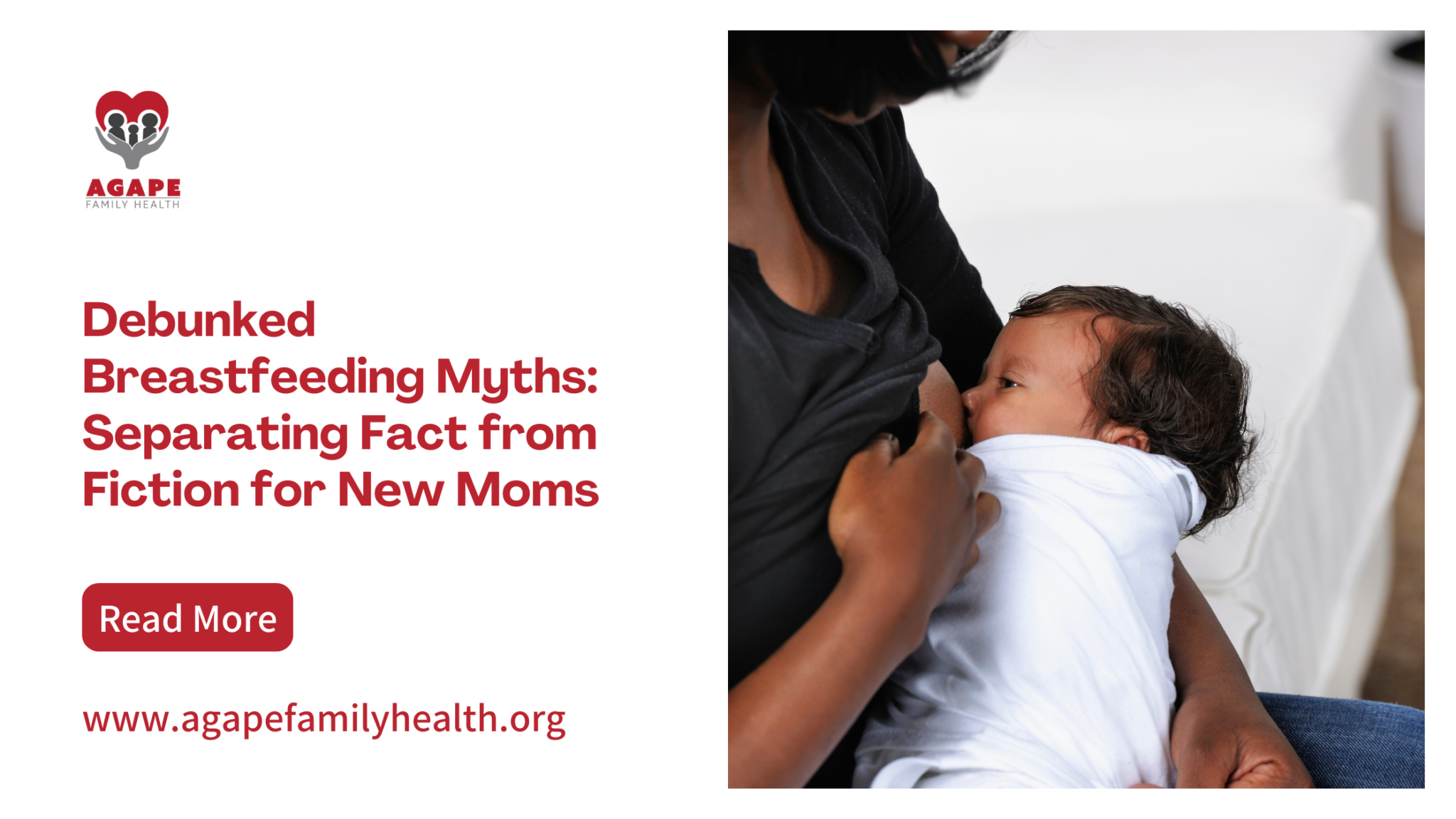Breastfeeding is a natural and beneficial practice for both mother and baby, yet it is often surrounded by numerous myths and misconceptions. These myths can create unnecessary confusion and stress for new mothers trying to make informed decisions about their baby’s nutrition. This article outlines the debunked breastfeeding myths, providing scientific counterparts to help new moms navigate their breastfeeding journey.
Myth 1: Breastfeeding Is Always Painful
Fact: Breastfeeding should not be painful if done correctly.
Many new mothers believe that breastfeeding is inherently painful, but this is a misconception. While some discomfort can occur initially as both mother and baby adjust, persistent pain is often a sign of improper latch or positioning.
The Truth: According to the National Institutes of Health (NIH), a proper latch is crucial for pain-free breastfeeding. The baby’s mouth should cover more of the areola than just the nipple, and the baby’s lips should be flanged out. If the baby is not latched correctly, it can cause significant discomfort or pain for the mother.
Proper positioning of the baby is also essential. The baby’s head and body should be aligned, and the baby should be facing the breast with its nose opposite the nipple. Mothers can experiment with different breastfeeding positions, such as the cradle hold, cross-cradle hold, football hold, or side-lying position, to find the most comfortable one.
If pain persists, consulting a lactation specialist can help correct the latch and positioning. Lactation specialists are trained to identify and resolve breastfeeding issues, ensuring a more comfortable and successful breastfeeding experience.
Myth 2: You Can’t Breastfeed if You Have Small Breasts
Fact: Breast size does not determine milk production.
A common myth is that women with smaller breasts cannot produce enough milk. However, breast size is determined by the amount of fatty tissue and not the milk-producing glands.
The Truth: The Centers for Disease Control and Prevention (CDC) states that breast size has no impact on the ability to produce milk. All women, regardless of breast size, have the same potential to produce sufficient milk for their babies. The milk-producing glands, known as alveoli, are responsible for milk production and are present in similar amounts in all women.
Milk production is driven by the demand-supply mechanism. The more a baby nurses, the more milk the mother’s body produces. This means that with frequent breastfeeding, even mothers with small breasts can produce ample milk for their infants.
Myth 3: Formula Feeding Is Just as Good as Breastfeeding
Fact: Breast milk provides unique health benefits that formula cannot replicate.
While formula can be a suitable alternative when necessary, it does not offer the same health benefits as breast milk. Breast milk contains antibodies and other immunological factors that help protect infants from infections and diseases.
The Truth: The American Academy of Pediatrics (AAP) emphasizes that breast milk is the optimal source of nutrition for infants. Breast milk provides protection against respiratory illnesses, ear infections, gastrointestinal diseases, and allergies, thanks to its unique composition of antibodies, hormones, and enzymes that are not present in formula.
Moreover, breast milk is easily digestible, reducing the likelihood of constipation and other digestive issues that formula-fed babies might experience. The bonding and emotional benefits of breastfeeding for both mother and baby also contribute to its superiority over formula feeding.
Myth 4: You Must Follow a Strict Breastfeeding Schedule
Fact: Feeding on demand is more beneficial for both mother and baby.
Some believe that babies should be breastfed on a strict schedule. However, feeding on demand, or when the baby shows signs of hunger, is generally more effective.
The Truth: The World Health Organization (WHO) recommends feeding on demand as it helps ensure the baby gets enough milk and supports a healthy milk supply. Babies naturally regulate their feeding times to meet their nutritional needs, and feeding on demand can help prevent issues such as underfeeding or overfeeding.
Signs that a baby is hungry include rooting (turning head and opening mouth), sucking on hands, or making sucking noises. Crying is often a late sign of hunger, so it’s best to respond to these earlier cues. Feeding on demand also helps maintain an adequate milk supply by stimulating the breasts to produce milk regularly.
Myth 5: Breastfeeding Causes Sagging Breasts
Fact: Breast sagging is more related to pregnancy and genetics than breastfeeding.
A persistent myth is that breastfeeding causes breasts to sag. In reality, changes in breast appearance are primarily due to the natural aging process, pregnancy, and genetic factors.
The Truth: Studies, including those published by the NIH, have shown that breastfeeding does not contribute significantly to breast ptosis (sagging). The stretching of ligaments during pregnancy and the effects of gravity over time are the main contributors to changes in breast shape and firmness.
Factors such as multiple pregnancies, larger pre-pregnancy breast size, significant weight fluctuations, and smoking can also impact breast appearance. Maintaining a healthy lifestyle, including regular exercise and proper support from a good-quality bra, can help mitigate these effects.
Learn more about breastfeeding and natal care and health.
Conclusion
Understanding the facts about breastfeeding can help new mothers make informed choices and approach breastfeeding with greater confidence. By debunking these common myths, we can promote healthier practices and provide the support that new moms need. For more detailed information and support, consult reputable sources.



